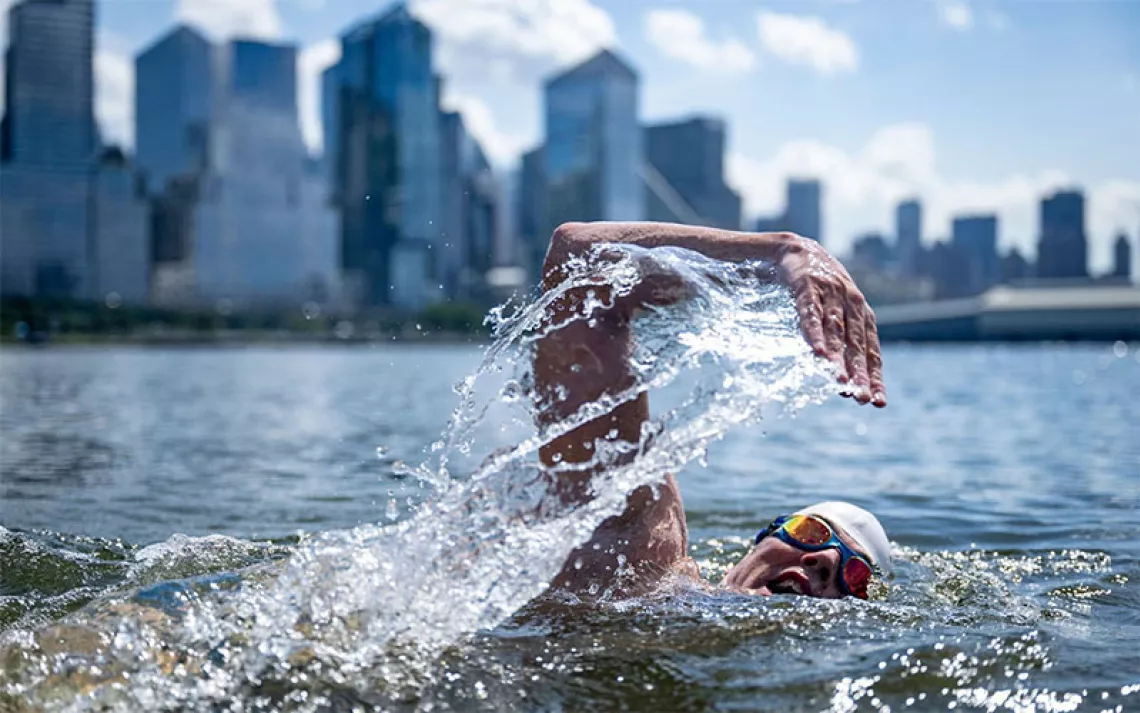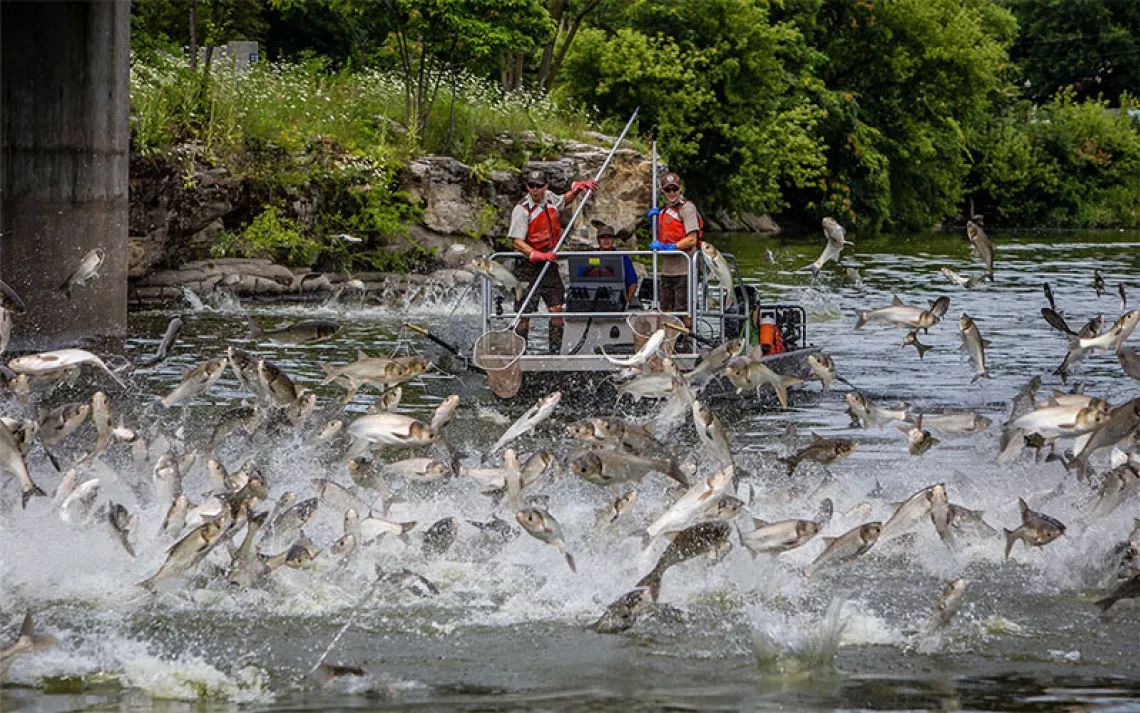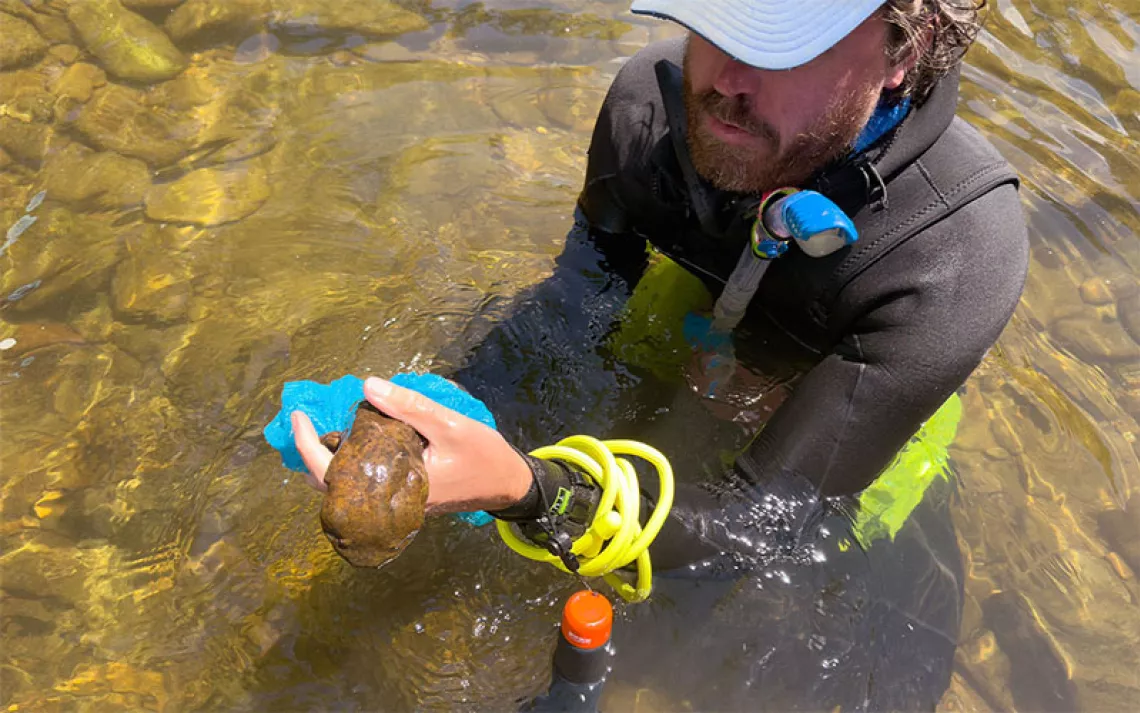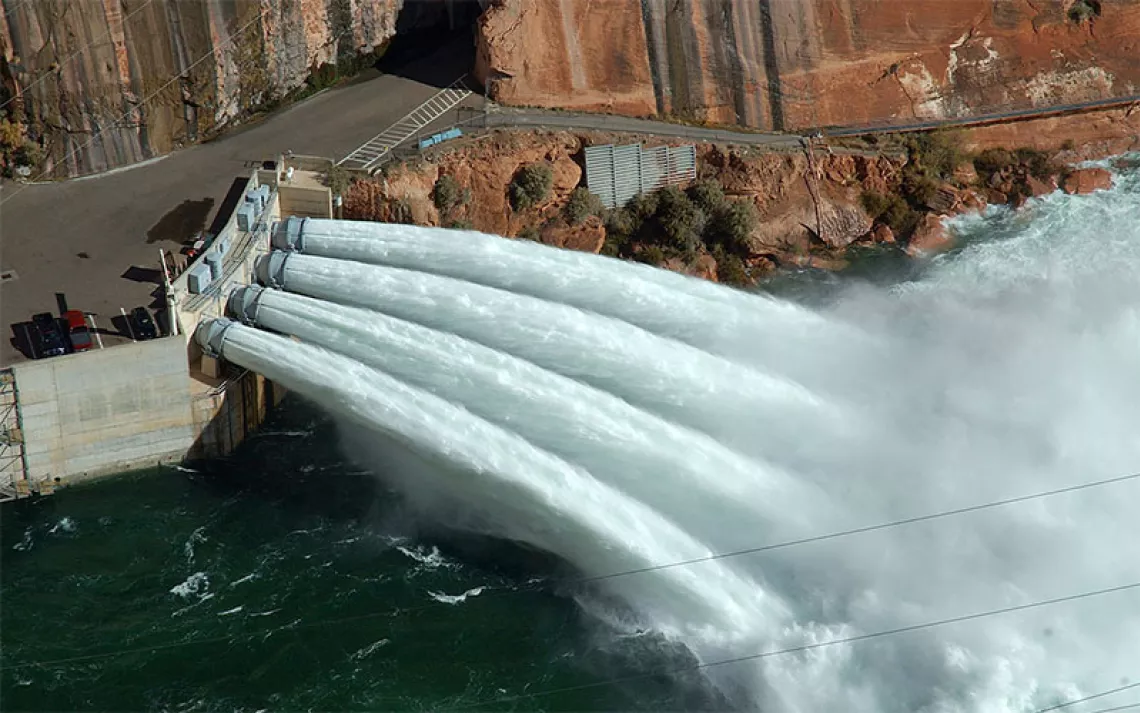Rolling Down the River
Graham Jordison is paddling the length of the Missouri River—and witnessing the causes and effects of climate change along the way
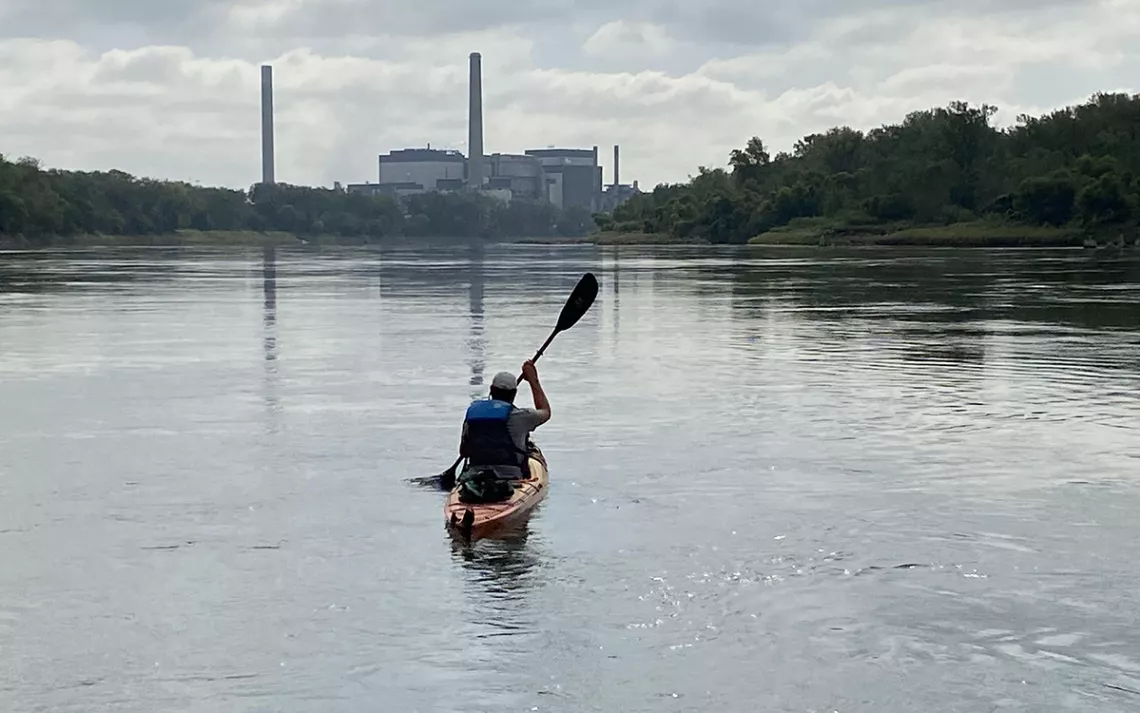
Photo courtesy of Kietryn Zychal
On July 19, the day Graham Jordison set off to paddle the entire 2,341 miles of the Missouri River from Three Forks, Montana, to St. Louis, Missouri, the National Weather Service in Billings tweeted a photo of chocolate chip cookies its staffers had baked on the dashboard of a car in 111-degree heat.
About 140 miles to the west, in a mountain valley near Bozeman, Jordison, a 36-year-old organizer with the Sierra Club’s Beyond Coal campaign, began paddling the longest river in the United States in relative comfort—at 91 degrees. He posted a photo on social media featuring himself standing next to his kayak and grinning ear to ear: “Hey, Facebook fam. Today I'm taking off down the Missouri River for a few months. If anyone is interested in following my trip, you can do so here. Also, please donate to these amazing Lincoln organizations.” He included links to a GPS Findmespot and a Gofundme page, where he hoped to raise $2,341 for the local Sierra Club chapter and the Indian Center in Lincoln. He explained, “In preparing for this longtime goal, I recognized how privileged I am to even be able to do this, so I want this journey to also benefit my community.”
Those preparations had taken Jordison months. He expected to be on the river for 65 days or longer—a trip that would require multiple assisted portages, help from “river angels” along the route, and an overwhelming number of logistical details. By the time he got on the water, his 17-and-a-half foot kayak weighed over 200 pounds, 80 pounds of which was water stored in bladder bags. (The Missouri is muddy and clogs a water filter quickly, so extra drinking water is essential.) His food supplies, camp stove and small propane tanks, tent, and clothes were all stuffed inside drybags in the kayak holds, along with two battery packs to keep his cellphone charged and his GPS working.
The months-long paddling adventure has long been a dream of Jordison's. His father, Larry—who dropped his son off in Three Forks and would meet him at the end of each day to portage the first five dams on the Missouri—ignited in Graham a love of rivers when he was eight years old. “He bought a rubber raft, and we took it down the Little Sioux River [in Iowa] when the water was pretty high,” Graham recalls. “Looking back, that was probably not very safe.” (Larry remembers it somewhat differently. “It was a raft built for rivers. It was sturdy. I could barely keep Graham in the boat. He kept wanting to get in the river. He had no fear.”)
It was Iowa itself that turned Graham Jordison into a self-described river rat. Though few people think of Iowa as the cornerstone of the country’s two longest rivers, the state’s eastern boundary is the Mississippi, its western boundary the Missouri. “Growing up, I never went to the ocean,” Jordison said. “But I swam in the dirtiest, muddiest rivers all over Iowa.”
That love of rivers stretched into early adulthood, when, 22 years old and fresh out of college, Jordison planned a trip down the Mississippi. Then, he was offered a job as an organizer with the Beyond Coal campaign, which had noticed Jordison’s activism targeting a campus coal plant at Iowa State. When offered the job, he thought, “You’re going to pay me to shut down coal plants? That’s what I do for fun.”
So Jordison canceled the Mississippi paddle and got to work trying to close down the coal industry. Seven years later, he was finally able to get on the river thanks to a Sierra Club policy that offers staffers a two-month sabbatical every seven years. At age 29, he spent 63 days paddling the Mississippi from its headwaters in Minnesota to New Orleans. One of Jordison’s idols, Adam Brooks, who kayaked the Mississippi, Missouri, and Yukon Rivers before he turned 30, loaned Jordison the paddle he still uses today.
There is a common belief that long-distance hikers and kayakers who spend months in the wilderness are running away from something. Jordison said he has other motivations. “I want to live the way humans lived for thousands of years, outdoors. Of course, my experience is nothing like their lives,” he admitted. He’s grateful to be able to see the country from its rivers, a perspective that very few people will ever see. “People ask me what I think about when I’m on the river. Sometimes, I think about nothing. I’m just battling the elements, literally trying to survive.”
And, in fact, his paddle down the Missouri has been an odyssey of challenges, as Jordison has had to cope with scorching temperatures, fierce winds, and wildfire smoke.
On the third day of the trip, a storm came up suddenly, and the wind blew Jordison into the shore, which he described as a vertical embankment with rocks and trees. “I got lucky,” he said. “I was about to be in the middle of this huge lake.” He secured his boat on the rocks and stood for 45 minutes on a tree that was “growing horizontally” out of the steep embankment. He said standing on a tree branch in the wind and pouring rain gave him time to relax and center himself. “Sometimes those moments are peaceful. I don’t have to paddle and the sun’s not burning me up.”
The following week, a heat dome parked over much of the Lower 48, bringing temperatures 10 to 15 degrees above normal. By the third week of his trip, Jordison reported, “I [hadn’t] had one day where the heat wasn’t in the high 90s.”
For Jordison, such high temperatures were a physical challenge. For other forms of river life, they can be lethal. The Upper Missouri in Montana is a world-class fishery, with average trout sizes of 16 inches, and in summer the banks are often crowded with anglers. But trout need cold water to thrive. When the water temperature reaches 67 degrees, trout begin to get stressed and may even die. As Jordison saw for himself on the river, low water levels from drought coupled with excessive heat may someday make some of the best streams and rivers in the United States inhospitable for many fish species. According to the nonprofit American Rivers, excessive heat from climate change is one of the greatest dangers to the health of rivers.
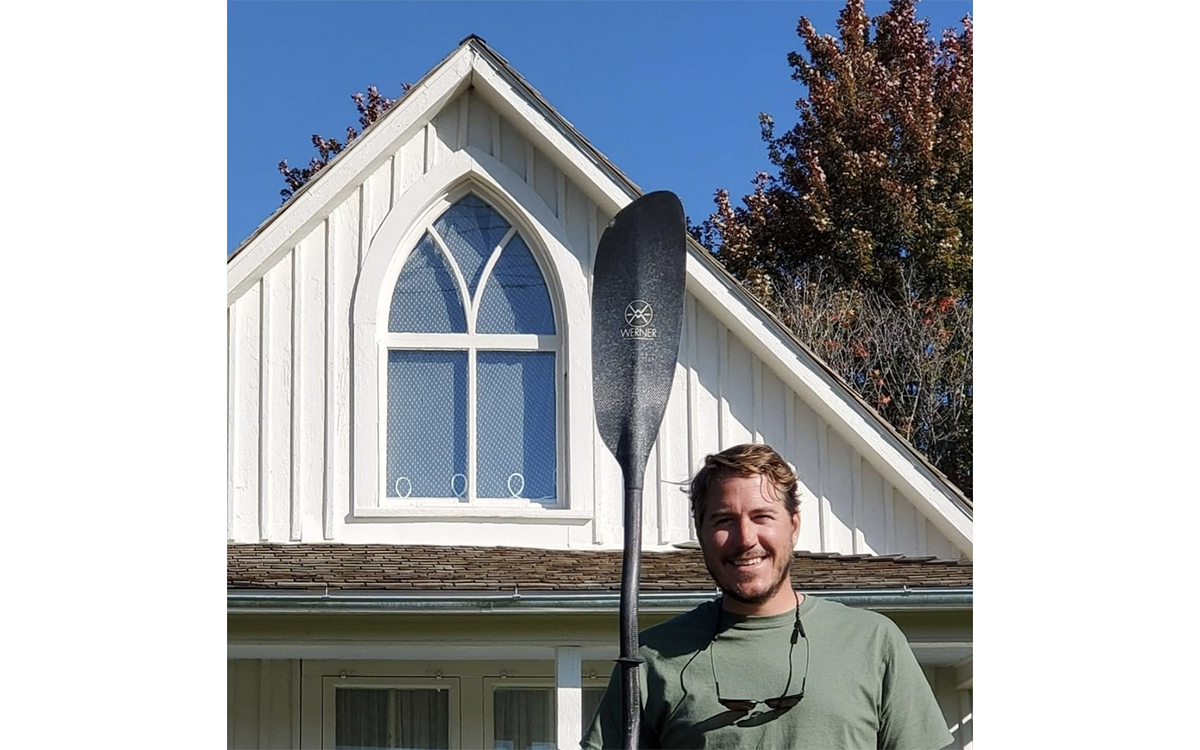
Photo courtesy of Graham Jordison
And along with heat and drought often comes fire. While approaching the Fort Peck Reservoir, Jordison found himself camped on the edge of the Devil’s Creek wildfire, started by a lightning strike, which would eventually burn 19,000 acres and injure five firefighters. The night he camped near the wildfire, Jordison looked out from his tent and thought he saw fireflies in the distance. But it was embers from the fire, glowing in a 30-miles-per-hour wind. In the morning, he opened the tent flap and ash blew into his eyes. Four firemen in yellow jackets pulled a boat up on the shore and walked past his tent. “That was scary,” he said, his voice trailing off as he recalled how close he was to the fires.
Even when he wasn’t close to fires, hazy skies were a constant reminder of wildfire elsewhere. “I didn’t see the stars for the first three weeks,” Jordison recalled. “Montana is Big Sky Country, and I didn’t see the stars because of the smoke. I didn’t see the mountains. I saw hills near me. There were so many mountains where I started, but I didn’t get to see off into the distance because of the smoke. I could smell it. I’m sure it affected my breathing.”
During his weeks on the river, Jordison witnessed the causes of the climate crisis as well as its effects. On the trip through North Dakota, Jordison paddled past two of the state’s six coal plants. Near Washburn, the Coal Creek plant (which cannot be seen from the river) emits the most carbon dioxide of the state’s plants, about 9.5 million tons per year. The previous owner wanted to shut down the plant to invest in wind, which might have affected jobs at a nearby coal mine. Politics intervened, and local leaders passed a slate of ordinances forbidding wind farm development, ensuring that the plant will burn coal for the foreseeable future. The plant takes 4.9 billion gallons of water from the Missouri each year, which is equivalent to an acre of water 15,000 feet tall. Plans for the plant to install carbon capture and sequestration would increase the needed water by 20 to 60 percent, negatively impacting the natural health of the river.
But not even a heat dome, wildfires, or coal plants could erase the natural wonders of the Upper Missouri River. Within the first hour and a half of his trip, Jordison was surprised to spot a grizzly bear along the shore. “I whipped my phone out to take a photo, and what I captured was a big brown blur,” he said. Jordison thought that the area is not the normal range for grizzlies in July, and he wondered what forces had brought the bear down from the mountains.
“The wildlife has been … crazy,” Jordison said. “I’ve never seen so much wildlife in my life— probably thousands of deer, whitetail, mule deer, thousands of eagles. It’s getting old, seeing bald eagles and golden eagles. Osprey are always beautiful to see. I’ve seen several catch fish on the water. They kind of flutter over the water almost like a dragonfly. They sit in one spot and they look down, and then all of a sudden they nosedive down into the water and catch their prey. It’s really incredible to watch.”
He also saw hawks, pelicans, ducks, geese, coyotes, a fox, and a paddlefish jumping out of the water in a rainbow arc. One day, he spotted hundreds of elk swimming across the river and on another, several moose.
Less than a dozen people a year will experience the Missouri the way Jordison has, by kayaking the entire length. And for good reason. Such intimate wildlife experiences can only be earned through a lot of sweat equity.
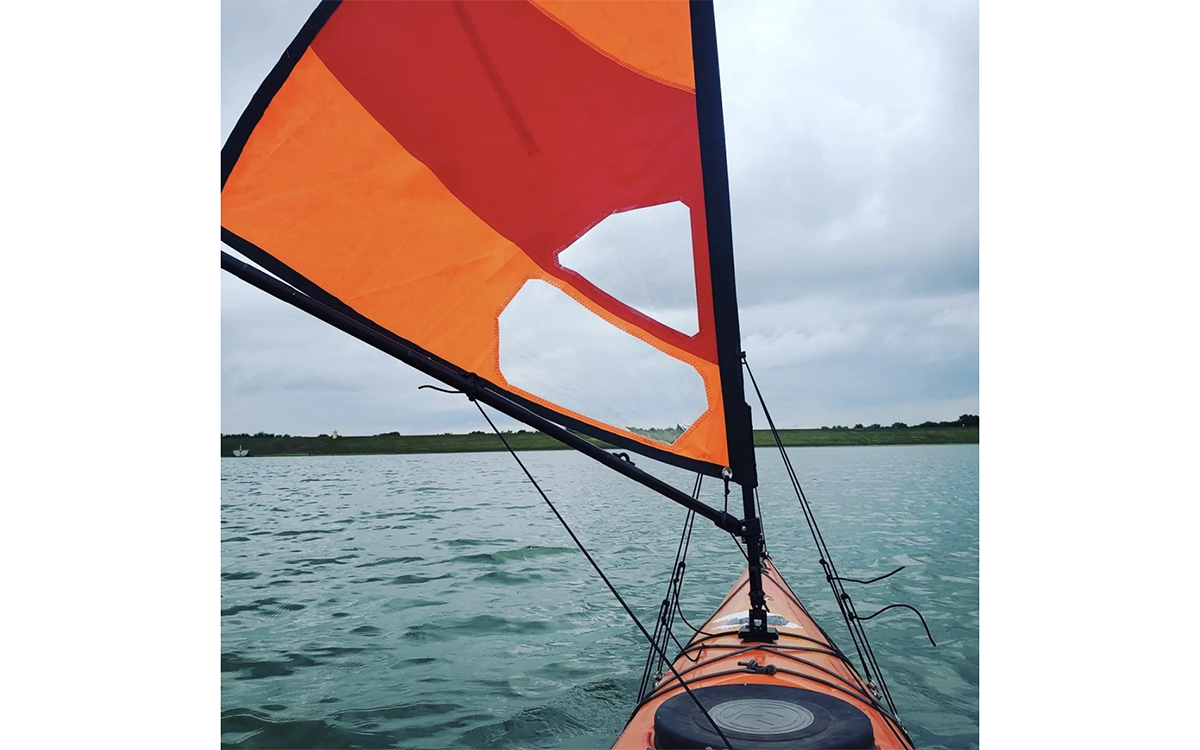
Photo courtesy of Graham Jordison
Kayaking the Upper Missouri River requires paddling through a series of enormous lakes created by 15 dams. Some of the lakes are hundreds of miles long. On an undammed river, moving with the current helps the paddler increase speed. On the lakes, current is replaced by waves, making it much more physically demanding to paddle.
“On these lakes, they call it the washing machine,” Jordison explained. “Where the river takes a big turn, where it’s miles wide, … you have big waves coming at you from all directions. It looks like a washing machine.” There were many times when he worried that the six-foot waves would capsize his boat.
Even though he was by himself, no one truly paddles the Missouri River alone. There is a network of hundreds of volunteers called river angels who stand ready to help portage canoes or kayaks around dams. The angels often provide paddlers with a meal or a place to stay, and sometimes are called on to rescue paddlers. They have a Facebook page, Missouri River Paddlers, and an old-fashioned list of phone numbers people can call for help throughout their journey.
On September 7—day 51 of the trip and after paddling some 1,500 miles—Jordison entered the final section of the Missouri, the channelized lower part past the dams and reservoirs. His father had joined him again in the last stretch before Yankton, South Dakota, to help him portage four more dams, and now Jordison experienced huge relief to feel the river current pushing him forward, which allowed him to paddle as fast as 10 miles per hour at times.
In Sioux City, Iowa, he stopped to meet with some Sierra Club volunteers. They asked him for details about his trip. Jordison told them the highs and lows, including when his boat was grounded in mud far from shore on Lake Sakakawea. He hopped out to push it back into deep water and found himself up to his chest in mud. Holding on to his boat, it took several hours to maneuver the boat back to navigable water. Jordison said he never wanted to paddle a 200-mile-long lake ever again.
While in Sioux City, two local television stations interviewed him about what he hoped to accomplish with his trip. He told them: “We’re educating people on climate change and alternatives to dirty energy—solar, wind. There’s lots of coal plants on the river. I’m going into different communities like Sioux City. There’s two coal plants just south of here.” He encouraged viewers to visit or write to their elected officials to advocate for clean energy.
The next morning, Jordison returned to the Missouri with a few Sierra Club members paddling alongside him in kayaks and a canoe for the first hour of his day. He had in front of him another 800 miles before arriving in St. Louis, where his father would be waiting to help him pull his boat out of the river. The Sierra Club paddlers peeled away and waved goodbye. Soon, Jordison became a speck in the distance. Then he rounded a bend in the river and was gone.
 The Magazine of The Sierra Club
The Magazine of The Sierra Club
